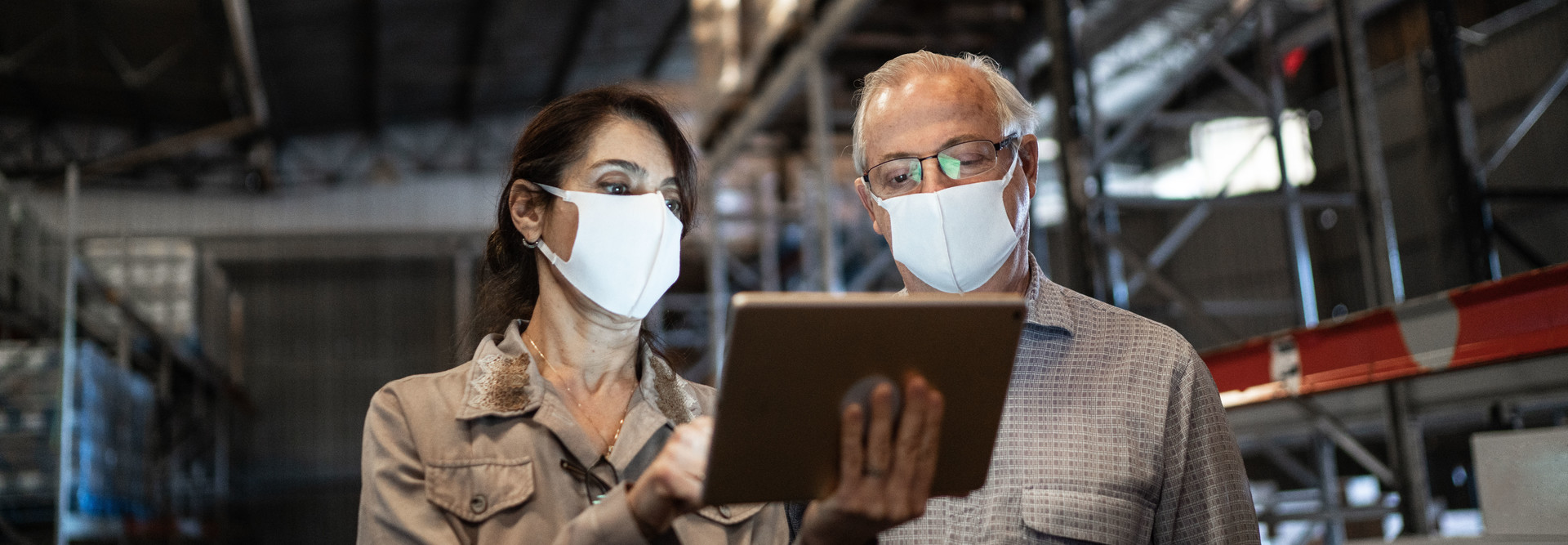But that’s just the beginning, says Schmid. “More important is answering the question, what do you do with this information? What are the actions you take based on your findings?”
Schmid points to the humble QR code, which provides a host of relevant data for logistics enterprises, from information about package arrival and departure times to package contents, recipients and transportation paths.
“The simplest form of connecting a package to the digital world is a QR code,” he says. “You might not think of it as IoT, but it is how we connect physical and digital environments. It could be a hand scanner, a mounted camera-based scanner, or a tag that goes on your luggage, but it’s part of IoT.”
IoT in Supply Chain Management
As noted by Forbes, IoT technologies are set to “supercharge” the supply chain by providing detailed information about that status and movement of goods from manufacturers to distributors to sellers and eventually to end users. Consider grocery stores, which currently discard approximately 30 percent of food received due to in-transit spoilage, overstocking in the store or fluctuating customer demand.
Here, Schmid makes the case that IoT could shift the market “from supply chain to demand chain by tracking demand with product-based sensors that help detect not just how the product is used but also environmental demand.” In practice, this means expanding the IoT ecosystem beyond traditional logistical purviews to include end-user interactions, in allowing companies to better align supply orders with actual demand curves.
MORE FROM BIZTECH: A guide to predictive analytics in retail.
IoT in Inventory Management
There’s also an expanding role for IoT-based inventory management. Schmid points to the rise of collaborative robots — or cobots — that are smaller, lighter and more intelligent than their operational predecessors.
“Workers no longer have to locate and pull products,” says Schmid. “Now, the cobot brings everything to the picker.” For inventory management, this means reduced risk of injury for human staff, increased accuracy for goods being picked and — thanks to advancements in artificial intelligence and machine learning — the ability of cobots to “learn” alongside their human counterparts to improve overall efficiency.
IoT in Transportation
In the transportation industry, smaller and more advanced IoT sensors now make it possible to track key product characteristics such as temperature, light levels and even exposure to sudden stops or jolts. Tracking can occur on a per-shipment or per-product basis to provide real-time insight into where products are, what their local environment is like and when they will arrive.
Schmid highlights the value of using sensors in the supply chain that are increasingly targeted in IoT, including, for example, the potential application of per-vial vaccine tracking. The development of smaller, flexible sensors — some of which are even biodegradable — now make it possible to tag, track and monitor anything, anytime. As a result, Schmid says, when it comes to the next iteration of IoT in logistics, “it’s about proof of value — not proof of concept. It’s not just about the technology, it’s about proving the strategy and the process.”
For transportation firms, this means identifying IoT use cases that deliver ROI, rather than deploying sensors at scale just because they can.
Schmid points to the smart fridge in his own home as an example of “because they can” IoT. While he was excited about the device — which cost substantially more than a standard refrigerator — he notes that “it’s one of the least-used smart devices in my home. While it gives recipe recommendations, it doesn’t account for what food is inside. It needs for functionality. It needs a use case.” The same applies for logistics IoT.
For Schmid, the reach of IoT in logistics is rapidly expanding. “We are going much further with sensors,” he says. “First it was pallets and packages and now it’s products — this creates implications beyond logistics. When you put sensors on the product, IoT reaches to the consumer itself.”











